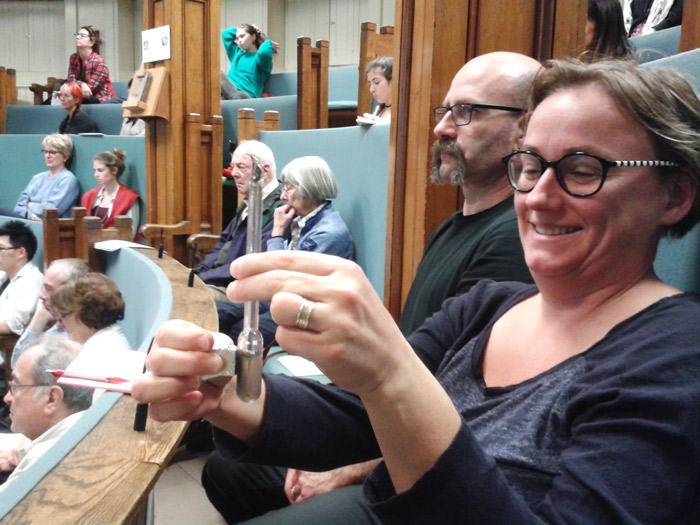On Nov. 4, as part of Redpath Museum’s Mini-Science series, McGill Assistant Professor Audrey Moores from the Department of Chemistry discussed her research on nanoparticles in the context of green chemistry.
Moores began by posing a fundamental question to the audience: “What is sustainability?”
From a pure materials science perspective, it is ending the overuse and overconsumption of elements. But social and economic impacts of supply and demand are factors that must be taken into consideration when creating a sustainable future. For example, old and broken electronics are shipped from developed countries to parts of Africa to be recycled. This process is not only environmentally harmful, but creates dangerous working conditions for those involved.
“[Recycling electronics] involves melting [special] metals, which inevitable creates toxic fumes,” Moores said. “And of course, the workers are not properly [equipped with safety gear].”
Creating a sustainable future not only requires new recycling methods, but also new products that might be easier to recycle.
Today, heavy metals play a huge role in industries, from electronics to pharmaceuticals, as they are used as catalysts—substances used to increase the speed of a reaction—in a variety of chemical transformations. A special example is the metal indium, which is found in all touchscreen devices. When mixed with titanium dioxide, it is used as a transparent and conductive coating. Currently, there is no alternative to indium’s unique properties. If no other options are found, this could pose serious problems to these industries.
“At the current rate of consumption, the supply of these critical elements—[such as silver, gold, indium, and palladium] is likely to run out in the next five to 50 years,” stated Moores.
Moores’ lab creates and examines alternatives to heavy metal catalysts. One candidate is iron nanoparticles. Though the catalytic properties of iron have been used for centuries, creating iron nanoparticles require very harsh conditions, such as extremely high temperatures, pressure, and pH level. In 2009, however, researchers in the Netherlands were able to conduct hydrogenation reactions catalysed by iron nanoparticles at room temperature. Hydrogenation involves the transfer of a hydrogen to another molecule, thereby increasing or decreasing its molecular complexity, and is used in a number of industries.
“Hydrogenation is an ubiquitous process because of its usage in the production of margarine to the synthesis of ibuprofen,” explained Moores.
The process proposed by the Dutch scientists required that no oxygen or water be present, however, making it extremely difficult to use on an industrial scale.
“We have figured out methods to create an oxygen-free environment in factories, but not water,” explained Moores. “New factories being built in the South of China or India have up to 80 to 90 per cent humidity throughout the year. If you tell them ‘no water,’ they are going to laugh at you.”
To address this issue, Moores’ lab added block copolymers to the reaction mix, making the iron nanoparticles water-resistant, with yields of up to 95 per cent.
The next step in Moores’ research is to take her findings to the industrial level for mass production. The ferromagnetic properties of iron nanoparticles allow them to be easily separated in industrial processes—a huge advantage compared to the heavy metal catalysts they are trying to replace.










Indium oxide is doped with tin oxide (not titanium oxide) to form transparent conductors for LCD & touch interface devices. Also, indium is extracted as an impurity from sphalerite (zinc sulfide), so as long as zinc is being produced the world is not going to run out of indium.